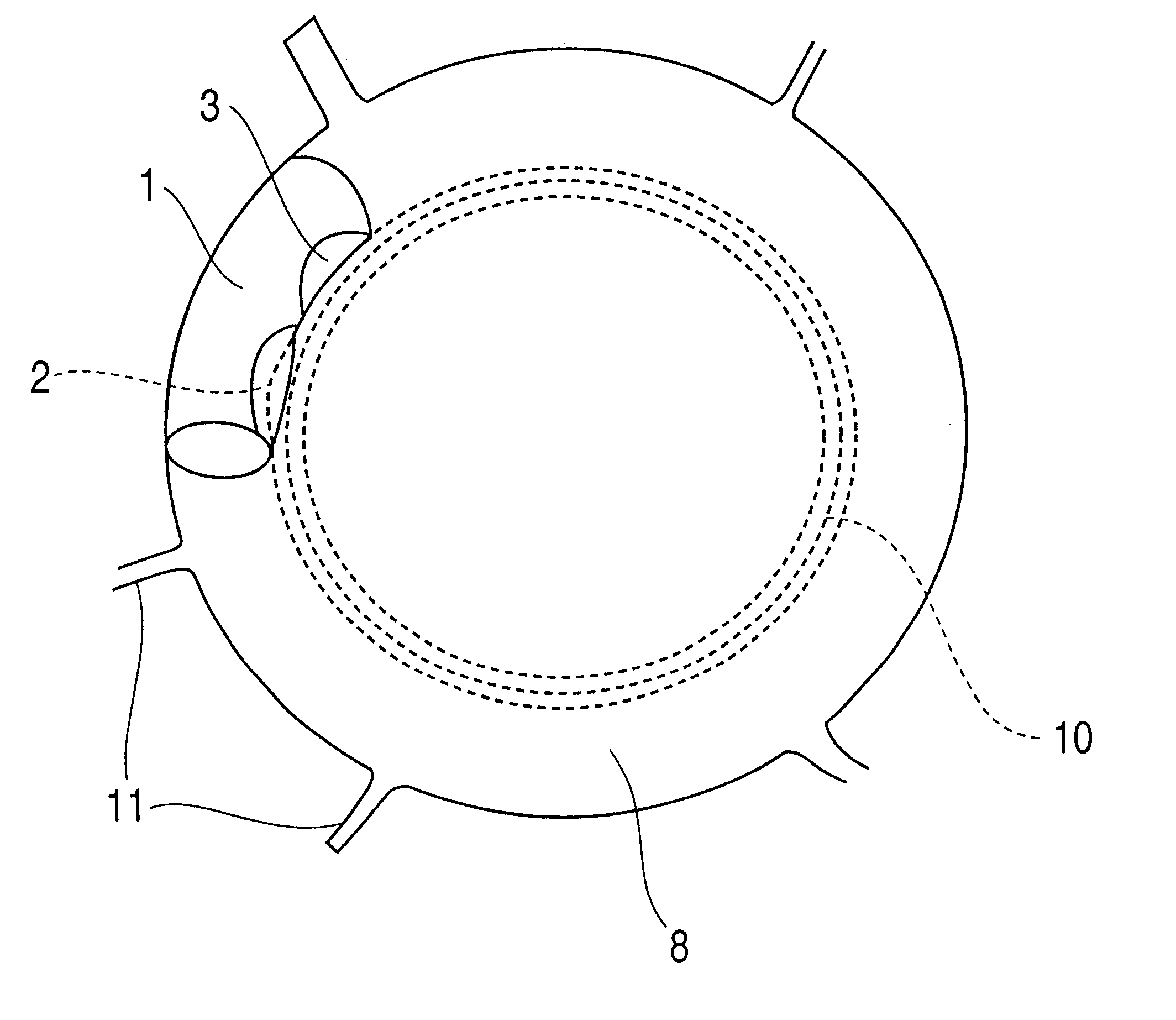Device for improving in a targeted manner and/or permanently ensuring the ability of the aqueous humor to pass through the trabecular meshwork
a technology of aqueous humor and a device, which is applied in the field of selective improvement and/or permanent ensuring the permeability of ocular aqueous humor, can solve the problems of reducing the potential for pressure reduction, affecting the safety of patients, and increasing the risk of glaucoma
- Summary
- Abstract
- Description
- Claims
- Application Information
AI Technical Summary
Problems solved by technology
Method used
Image
Examples
Embodiment Construction
FIG. 1a illustrates a side view through the small tubular element 1. It presents a curvature along its longitudinal extension. Two openings 2, 3 are machined into the outside wall of the small tubular element 1 on the concave side. As is seen from FIG. 1, openings 2 and 3 have a smallest dimension corresponding to the inside diameter of the small tubular element 1 through which a surgical instrument can be longitudinally introduced. Two openings 4, 5 are provided on both sides on the end sections of the small tubular element.
All the edges of the openings 2, 3, 4 and 5 are extremely finely polished and rounded off in order to avoid any traumatic irritations of the tissue.
In the illustrated case, the internal diameter of the cross-sectional view illustrated in FIG. 1c amounts to 170 mm and its external diameter corresponds to 270 mm.
With application of an appropriate surgical technique, which is substantially the modification of the trabeculotomy technique as described above, Schlemm'...
PUM
 Login to View More
Login to View More Abstract
Description
Claims
Application Information
 Login to View More
Login to View More - R&D
- Intellectual Property
- Life Sciences
- Materials
- Tech Scout
- Unparalleled Data Quality
- Higher Quality Content
- 60% Fewer Hallucinations
Browse by: Latest US Patents, China's latest patents, Technical Efficacy Thesaurus, Application Domain, Technology Topic, Popular Technical Reports.
© 2025 PatSnap. All rights reserved.Legal|Privacy policy|Modern Slavery Act Transparency Statement|Sitemap|About US| Contact US: help@patsnap.com



